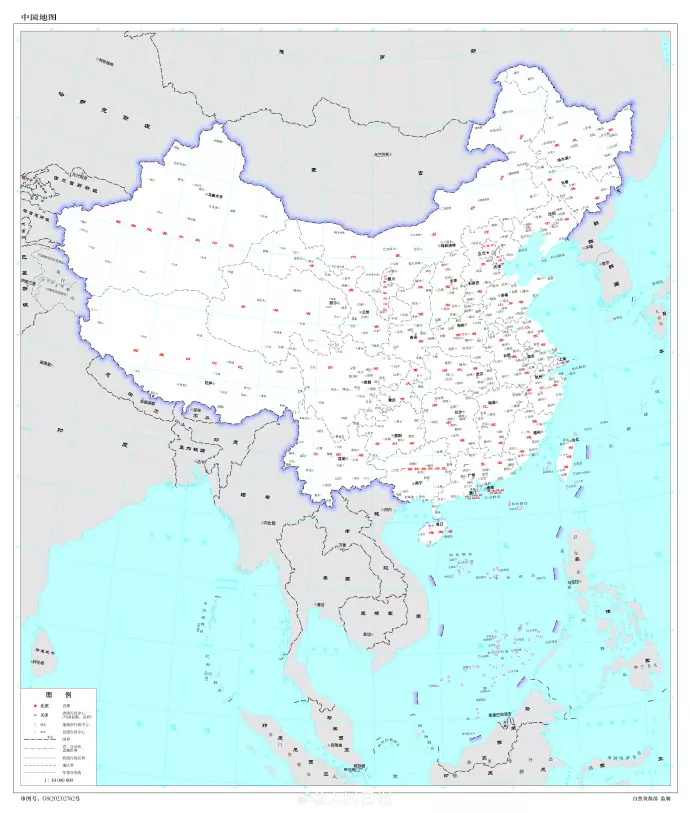
China's new standard map lays claim to Arunachal Pradesh, Aksai Chin region
The '2023 edition of the standard map of China' includes contentious territories such as Arunachal Pradesh, Aksai Chin, Taiwan and the disputed South China Sea regions

In a controversial move, China on Tuesday (August 28) released the new edition of its official standard map for 2023 incorporating Arunachal Pradesh, Aksai Chin region, Taiwan and the South China sea within its borders.
The '2023 edition of the standard map of China' released by the Chinese ministry of natural resources, includes contentious territories such as Arunachal Pradesh, Aksai Chin, Taiwan and the disputed South China Sea regions. The release has raised diplomatic concerns and rekindled existing disputes, said news reports.
Apart from staking claims over long-disputed Indian territories, the map includes the controversial nine-dash line, which asserts a substantial portion of the South China Sea as Chinese territory. This move has been opposed by countries like Vietnam, the Philippines, Malaysia, Brunei and Taiwan, who have competing claims over the same maritime regions. Just as in the previous maps, the 10th dash is placed east of Taiwan, underlining China's claim over the country.
This newly-released map was officially reported by the country’s state-run media outlet Global Times.
“This map is compiled based on the drawing method of national boundaries of China and various countries in the world,” Global Times said in a post on X, formerly Twitter, while carrying the latest edition of the map.
Particular significance for India
Of particular significance for India is the inclusion of Arunachal Pradesh, which China calls as South Tibet, and the Aksai Chin region in this new edition of China's territorial map. Both have been a flashpoint between China and India for decades, particular after the 1962 war.
India has, however, consistently reiterated its stance saying that the state of Arunachal Pradesh has “always been” and will “always be” an integral part of the country.
Renaming places in Arunachal
Beijing, in April this year, had renamed 11 places in Arunachal Pradesh to stake its claims over what it calls Zangnan or South Tibet. Among the places renamed by Beijing, a list of which was issued by the ministry of civil affairs, were two land areas, two residential areas, five mountain peaks and two rivers. It included a town close to Arunachal's capital Itanagar. In 2021 too, Beijing had issued a list of 15 places which it had renamed and earlier in 2017 as well.
As reported by the state-run Global Times, China’s ministry of civil affairs had said while releasing the list of renamed places: “According to the relevant regulations of the State Council (China’s cabinet) on the management of geographical names, our ministry, together with relevant departments, has standardised some geographical names in southern Tibet.”
The Global Times report had gone to the extent of quoting some experts who said that the move to standardise these geographical names “falls within China’s sovereignty”.
Reacting to the renaming of these places by Beijing, external affairs ministry spokesperson Arindam Bagchi had said, “Arunachal Pradesh has always been, and will always be an integral part of India. Assigning invented names to places in Arunachal Pradesh does not alter this fact.”
Interestingly, China had released a list of renamed places in 2017 after Dalai Lama, who is fighting for an independent Tibet, visited Arunachal Pradesh.
India and the G20 Summit
Experts also questioned the timing of the release of the map. China has released the latest list of renamed places at a time when India is all set to host the G20 Summit on September 9–10. Chinese President Xi Jinping is expected to attend the summit in New Delhi. Similarly, China had released a list in 2021 when India had hosted a meeting of the Shanghai Cooperation Organization defense and foreign ministers in Goa in May.
According to the report published by the state-run media, the 2023 standardised map for public use was released during “National Mapping Awareness Publicity Week” in China. Last year, Beijing passed a new border law to tighten border management. The law assigned various responsibilities to Chinese civilian and military authorities to take measures to “safeguard national sovereignty”.
(With agency inputs)

